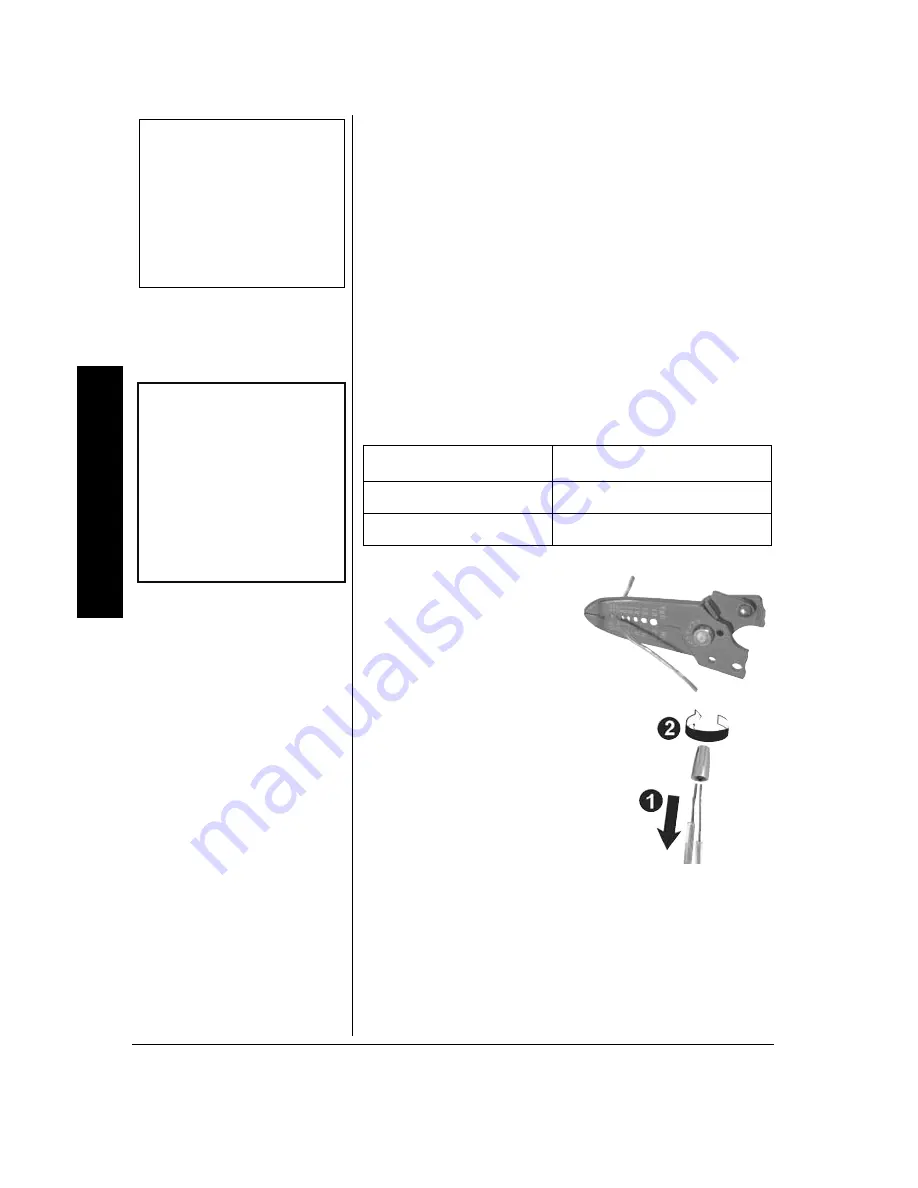
8
Connect
ions
Important: If you are connecting more than two
speakers in series only or parallel only, be sure the
total impedance does not exceed the amplifier’s
maximum impedance (16 ohms) or fall below the
minimum impedance (4 ohms). You can achieve a
proper total impedance by combining series and
parallel connections
±
.
2
4'2#4+0)
6*'
5
2'#-'4
9
+4'
Use the shortest length of wire possible to connect
the speakers. After placing the speakers in the
desired location, determine the wire length and
choose the appropriate gauge size.
±
• Use a wire stripper
(not supplied) to remove
about half-inch of
insulation from the end
of the speaker wire.
• Then, attach a wire
connector
(not supplied) and twist
the exposed wire to
secure all of the wire
strands.
• To connect the speaker wire to the amplifier,
press down the appropriate push terminal lever
on the amplifier and insert the end of the wire into
the terminal’s hole. Then, release the lever to
secure the wire.
Wire Length
Wire Gauge
25 feet or less
18-gauge
Over 25 feet
16-gauge
±
016'
±
If you connect speakers
without transformers, the
speaker wire should be no
longer than 50 feet (See
“Connecting Speakers
with Transformers” on
page 13).
Wire Stripper
±
016'
±
For the best results when
connecting speakers
(in series or parallel), only
use speakers having the
same impedance.
Wire
Connector






































